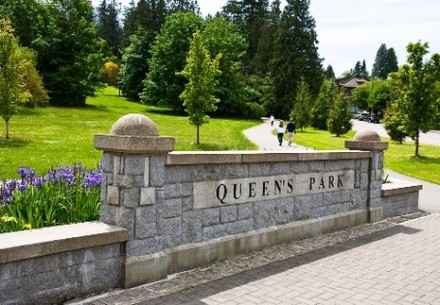Below is a story I wrote from an agenda item at Monday’s (Feb. 20) council meeting. The item concerned a development variance permit requested for a subdivided lot in Queensborough to allow a smaller site frontage than what is permitted under the bylaw. Councillors passed the motion, but neighbouring property owners raised concerns about development that Coun. Chuck Puchmayr said are recurrent issues in the community.
Queensborough residents say their neighbourhood is becoming increasingly congested and unsafe due to new developments in the area.
At last night’s council meeting, neighbours of 311 Johnston Street voiced their concerns over the owner’s proposal to subdivide and develop the property, saying it could create parking problems, impede emergency access and even damage their homes.
“We already have various issues with parking due to illegal basement suites, legal basement suites, double occupants, and I believe the extra congestion with having a couple more houses in a one-property area … would only make it more difficult for emergency responders,” said Darren Kucheran, whose parents own an adjacent lot.
According to neighbour Lorne Elliottt, the same party that purchased 311 Johnston Street also bought two lots across the street last year and has since built “two castles” that aren’t up to code.
“The houses across the street that they just built are supposed to be set back 25 feet from the front under the bylaws,” he said. “Engineering has them recorded at 31 feet, but I took my tape measure, went over there and they measured 21 feet, not 31. And then [they] added a front porch.”
One of the two properties – listed as a 5-bedroom, 4-bathroom custom-built home with a 450-square-foot garage – is currently on the market for $689,000.
Down the street, Elliott said 13 new homes have gone up in recent years, and there’s as many as five suites in each house.
“They’re going to turn our street into a ghetto,” he said, pointing out that the size and proximity of the new homes presents a fire hazard.
“We get one fire, we’re going to lose the whole block.”
Presented with Elliott’s numbers, planning analyst David Guiney said, “I don’t know how to react … I just don’t have an answer for that.”
Land surveys show that the homes on both properties meet the city’s site area and frontage bylaws.
After the meeting, Coun. Chuck Puchmayr said that subdivision in New Westminster is a contentious issue – especially in Queensborough, where lots were originally zoned bigger than elsewhere in the city to accommodate septic fields.
According to Puchmayr, some of the people who bought those lots built “extremely large houses, very non-contextual, three stories and sometimes housing several units.”
Since then, the city has brought in bylaws and created incentives for developers to build homes that are more suited to the neighbourhood.
He refuted Elliott’s claims that the homes on Johnston Street violated code.
“That’s impossible. People have to hire a surveyor, the city has to approve the plans, the inspector has to come down. There’s a lot that goes into it, and for him to say that a few houses across the street basically violated the building code and built these houses 10 feet closer than they were permitted, that just can’t happen.”
Puchmayr also explained that under provincial floodplain regulations, new developments in Queensborough must be “preloaded,” or built at a higher elevation than existing homes.
“Suddenly you could have the house on your left and the house on your right and the house in front of you all developing at a new level above the floodplain and you’re still at the lower level down in a valley. It creates huge issues with drainage and water problems.”
For people like Kucheran, whose parents’ 1954 home is built at grade, this means an increased risk of flooding.
He said he’s also worried about the impact that the process of driving steel piles into the earth could have on their house.
“Our property is built on a concrete slab foundation directly beside the property and I believe pile driving construction will cause a lot of damage,” he said.
While Puchmayr said that pile driving companies are legally bound to pay for any damages to adjacent properties they cause, he admitted it’s a difficult issue.
“There are a lot of growing pains with development in Queensborough,” he said. “Especially when you have to preload and drive piles.”




